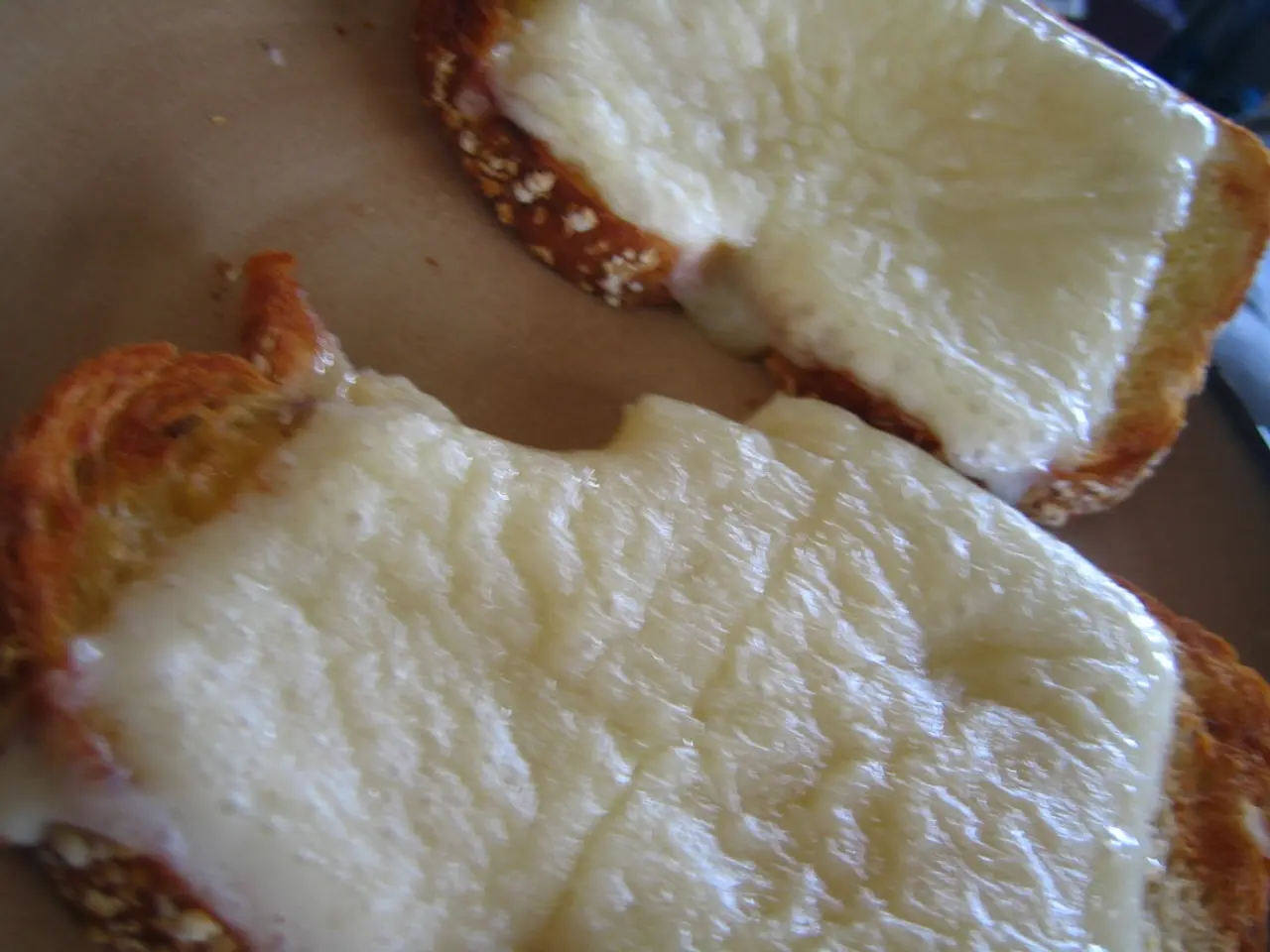Dietary Guide and Nutritional Composition for Infants Aged 1 Year
## Nutritious and Safe Food Options for One-Year-Olds
At the age of one, children can begin to explore a variety of foods, expanding their diet to include options similar to those enjoyed by the rest of the family. However, it's essential to be mindful of potential choking hazards and maintain a focus on nutritious, wholesome choices.
### Recommended Foods
Fruits and vegetables play a significant role in a one-year-old's diet. Soft-cooked or ripe fruits like bananas, avocados, and plums, as well as steamed vegetables such as carrots and broccoli, are excellent choices [3]. Dairy and calcium sources should include pasteurised cow's milk or dairy alternatives like soy milk with added calcium, yoghurt, cheese, and ricotta [1]. Protein sources can be lean meats (chicken, pork), fish, eggs, and legumes (lentils, chickpeas) [1]. Whole wheat bread, pasta, and oats are good grain options [1,3]. Healthy fats, such as avocado, olive oil, and small amounts of hummus, are also recommended [1,3].
### Foods to Avoid
To minimise the risk of choking, it's crucial to avoid certain foods. Whole grapes and cherry tomatoes, due to their shape and size, should be cut into smaller pieces [2,3]. Nuts and seeds, including whole nuts and seeds, are high-risk choking hazards [2,3]. Hot dogs and sausages should be cut into small, manageable pieces or avoided altogether [2]. Popcorn and chewing gum can get stuck in the throat [2,3]. Hard candies and large chunks of meat or cheese should also be avoided due to their size and hardness [2,3]. Raw or hard vegetables should be avoided unless they are cooked to be soft [2].
### Special Considerations
When a one-year-old is sick, their dietary needs may not change significantly, unless they are experiencing vomiting or diarrhea. In these cases, a bland diet, which can be remembered using the acronym BRAT (Bananas, Rice, Applesauce, Toast), may be recommended [5].
It's important to note that toddlers can eat the same foods as their family members, though some may need to be modified. Those who have just switched to solid foods may find purees or baby food easier when they are sick [6]. Toddlers who are still breastfeeding may want to breastfeed more when they are sick [6].
Always supervise your child during meals and ensure food is cut into safe, bite-sized pieces. Teaching self-feeding can also help reduce the risk of choking [4].
The American Academy of Pediatrics (AAP) recommends no more than 4 ounces of juice per day for toddlers [7]. Babies and toddlers should always have access to water [8]. A one-year-old child typically needs approximately 1000 calories per day, with larger and more active children requiring slightly more [8]. A varied diet can help ensure that a one-year-old receives the necessary nutrients for growth and development.
Grains like oatmeal offer fibre that can prevent constipation in toddlers [3]. Toddlers can enjoy all vegetables, including baby food purees with both vegetables and fruits [9]. Proteins such as meat, lentils, beans, and tofu can be part of a toddler's diet [1].
In conclusion, a well-rounded, nutritious diet for a one-year-old includes a variety of fruits, vegetables, dairy, grains, and proteins. By being mindful of potential choking hazards and offering a variety of healthful foods, parents and caregivers can help ensure their one-year-old receives the necessary nutrients for growth and development.
- As a parent or caregiver, being aware of food and food benefits is crucial when planning meals for one-year-olds, ensuring a well-rounded, nutritious diet.
- The American Academy of Pediatrics (AAP) emphasizes the importance of avoiding foods that can pose a choking hazard, such as whole grapes, cherry tomatoes, and hard candies, for the safety of kids.
- Fruits like ripe bananas, avocados, and plums, along with steamed vegetables such as broccoli and carrots, are nutritious options for one-year-olds, making mealtime a part of lifestyle and family-health.
- Breastfeeding, even in toddlerhood, can provide additional benefits, as noted in parenting guides, and may increase when kids are sick or experiencing illness.
- In cases of sickness, when vomiting or diarrhea occurs, a bland diet using the BRAT acronym (Bananas, Rice, Applesauce, Toast) may be recommended by health-and-wellness experts, especially while making adjustments to cooking practices.
- A one-year-old child can enjoy the same foods as their family members, however, may benefit from purees or baby food when they are sick or finding it difficult to eat solids.
- By supervising meals, ensuring food is cut into safe, bite-sized pieces, and teaching self-feeding, parents and caregivers can reduce the risk of choking for toddlers.
- The American Academy of Pediatrics (AAP) recommends no more than 4 ounces of juice per day for toddlers and always providing access to water for adequate hydration and proper digestion.
- In light of science and nutritional guidelines, a well-rounded diet for a one-year-old includes a variety of fruits, vegetables, dairy, grains, and proteins, ensuring primary care for their growth and development in line with the food-and-drink aspects of health and family life.




